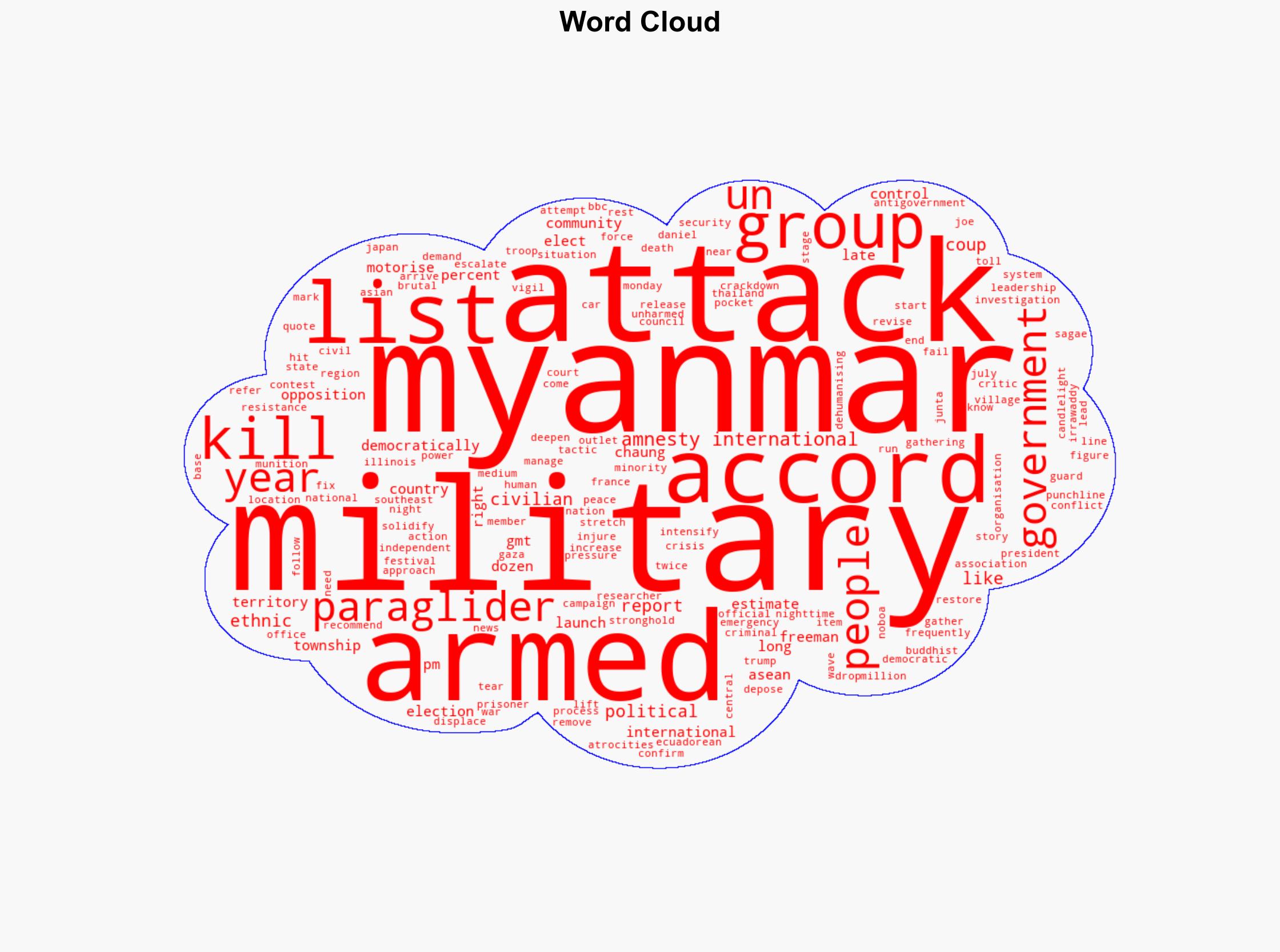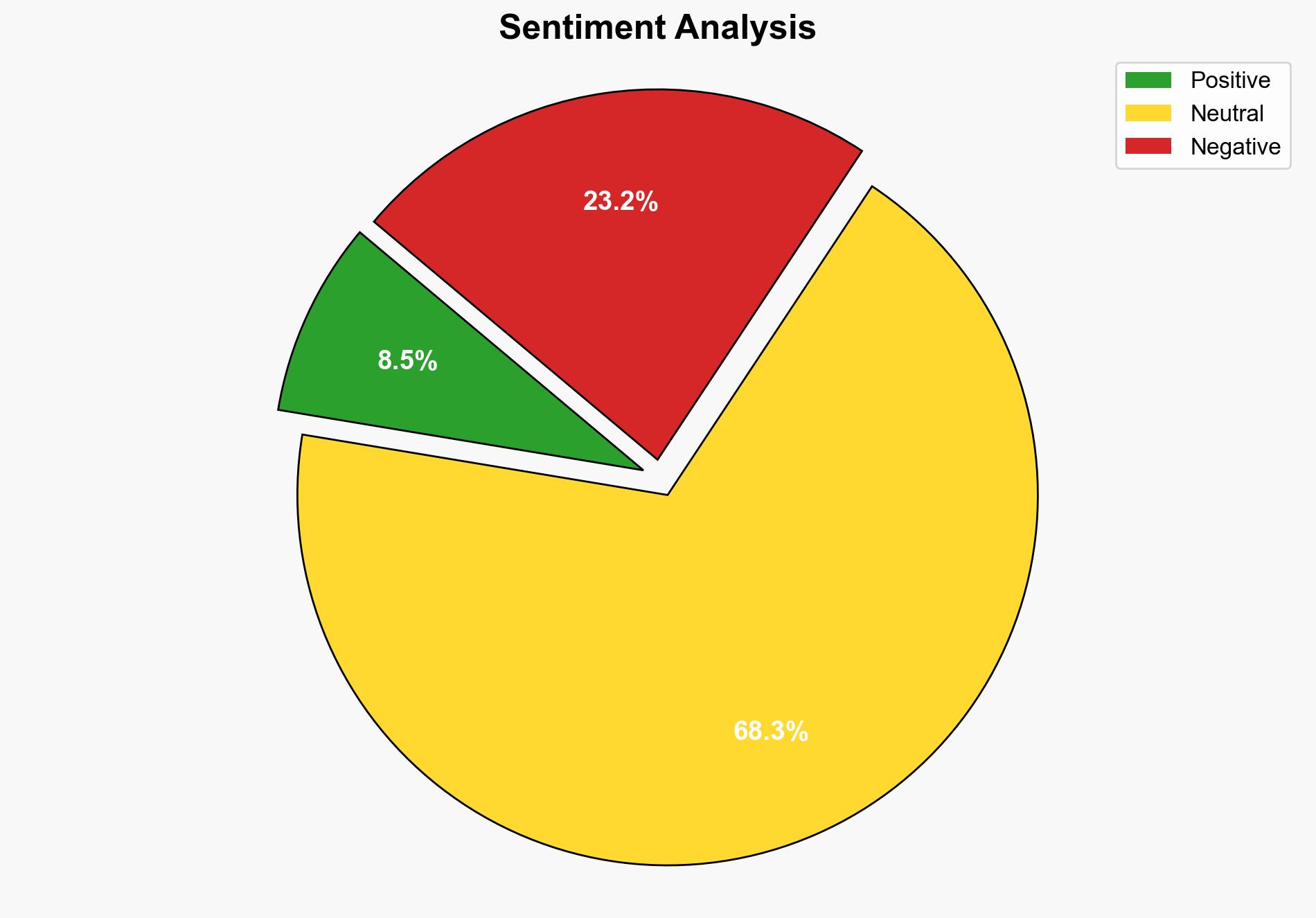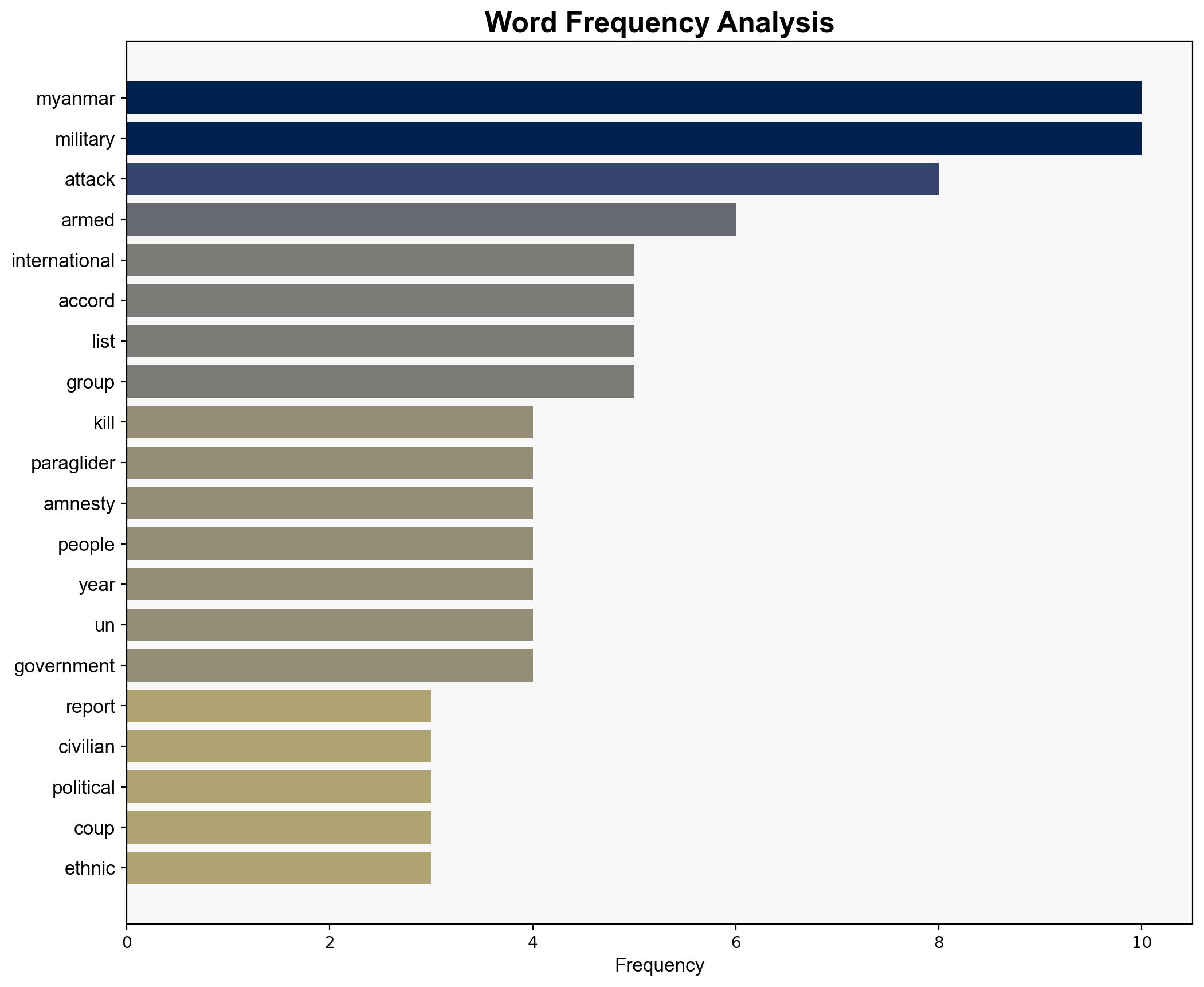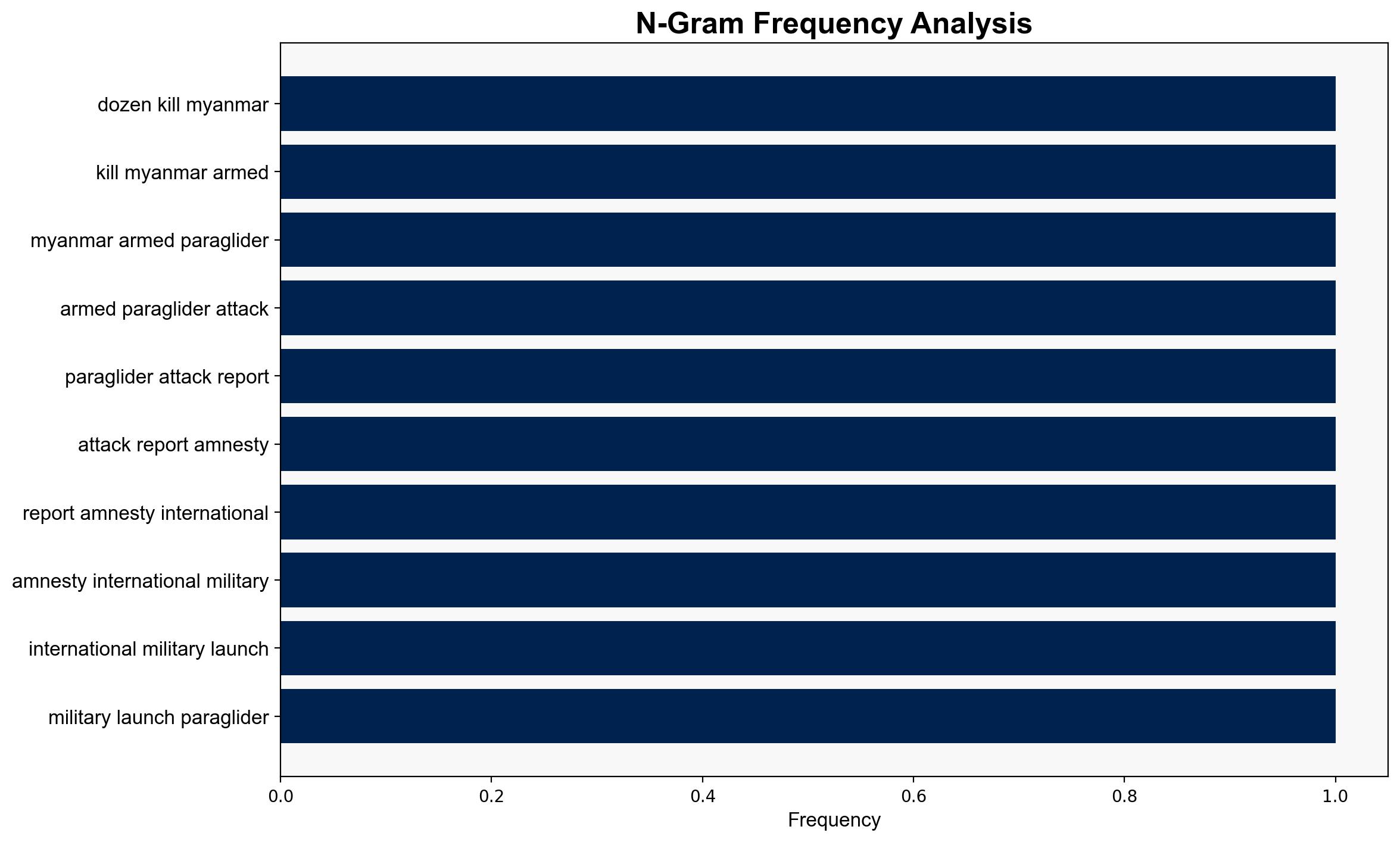Dozens killed in Myanmar after armed paraglider attack Reports – Al Jazeera English
Published on: 2025-10-08
Intelligence Report: Dozens killed in Myanmar after armed paraglider attack Reports – Al Jazeera English
1. BLUF (Bottom Line Up Front)
The most supported hypothesis is that the Myanmar military is intensifying its campaign against anti-government elements, using unconventional tactics such as motorized paraglider attacks to instill fear and suppress resistance. Confidence level: Moderate. Recommended action: Increase international diplomatic pressure on Myanmar’s military regime through multilateral forums and targeted sanctions to deter further escalation and protect civilian populations.
2. Competing Hypotheses
Hypothesis 1: The Myanmar military is employing motorized paraglider attacks as a new tactic to suppress anti-government activities and consolidate power ahead of planned elections.
Hypothesis 2: The attacks are part of a broader strategy by the military to provoke and justify a harsher crackdown on ethnic armed groups and opposition forces, potentially to gain leverage in upcoming peace negotiations or international forums.
3. Key Assumptions and Red Flags
– Assumption for Hypothesis 1: The military has the capability and intent to use unconventional tactics effectively.
– Assumption for Hypothesis 2: The military seeks to manipulate the narrative to justify increased military actions.
– Red Flags: Lack of independent verification of the attack details; potential bias in reports from opposition-aligned sources.
– Blind Spots: Limited information on the military’s internal decision-making processes and strategic objectives.
4. Implications and Strategic Risks
The use of unconventional tactics like paraglider attacks could signal a shift towards more unpredictable and asymmetric warfare, increasing regional instability. This could lead to a humanitarian crisis, with potential spillover effects into neighboring countries. The international community’s failure to respond effectively may embolden the military to continue or escalate such tactics.
5. Recommendations and Outlook
- Engage ASEAN and UN to coordinate a unified response, including sanctions and diplomatic isolation of Myanmar’s military leadership.
- Enhance intelligence-sharing with regional partners to monitor military activities and prevent further civilian casualties.
- Scenario Projections:
- Best Case: International pressure leads to a de-escalation and resumption of peace talks.
- Worst Case: Continued military aggression results in widespread conflict and humanitarian disaster.
- Most Likely: Ongoing low-intensity conflict with sporadic military offensives and civilian casualties.
6. Key Individuals and Entities
– Joe Freeman, Amnesty International researcher
– Daniel Noboa, Ecuadorean President (mentioned in context of regional attacks)
7. Thematic Tags
national security threats, regional focus, counter-terrorism, human rights violations





